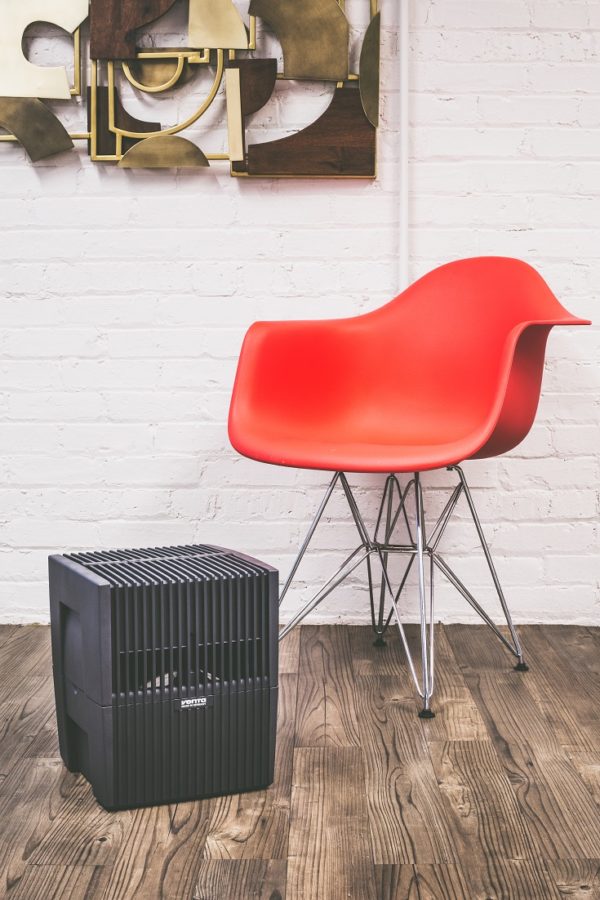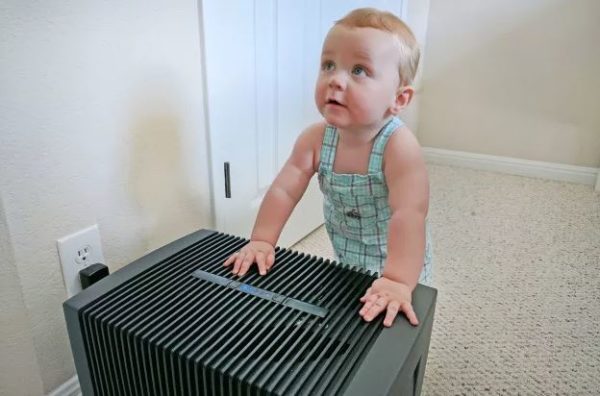Studies have shown that some humidifiers can actually be making you sick. Learn how to avoid these and which humidifiers to choose for healthier breathing.
For millions of people across the US, humidifiers are a winter season necessity. Cold, dry air can have detrimental effects on your health and wellness, not to mention how it can damage delicate materials like the wood of instruments and furniture. While using a humidifier is the first step to alleviating dry air, you should be cautioned that not all humidifiers are adding positive value to your health.
According to research done by the Environmental Protection Agency and Consumer Reports, there is a risk that your humidifier may be harmful to your health. Proper maintenance is always required of humidifiers, but some types are more of a danger than others. Throughout this article, we will discuss the different types of humidifiers and how they can be a potential health threat, and which types are safer options.
Ultrasonic Humidifiers
Through ultrasonic vibration, these types of humidifiers typically produce moisture in the form of cool mist. The problem with many ultrasonic types is that the minerals often found in water (and particularly tap water) become dissolved and enter the air as “white dust.” Not only does the white dust fall upon surfaces in the room creating a white film, but it can also pose a serious health risk to those with respiratory issues and even children.
A study at the University of Utah found an infant had developed a serious lung injury due to breathing in the aerosolized mineral composition of the water, or the “white dust.” According to the study, the following medical conditions were detected from the infant’s accidental inhalation of the white dust: prolonged hypoxemia, tachypnea, pneumonitis, and mild nonreversible obstructive ventilatory defect. Young and especially those with asthma are cautioned when using humidifiers for these reasons.
When it comes to ultrasonic humidifiers, keeping up with maintenance is the most important part of preventing these respiratory damages from occurring. By not regularly cleaning the inside of the humidifier, you are creating the perfect conditions for mold and bacteria to thrive. These pollutants can be dispersed back into your air through the mist that is released. The idea of microorganisms being released into the air you breathe is unsettling, to say the least!
Vaporizer Humidifiers
The risk of breathing in airborne minerals or bacteria is less severe with hot vaporizer types, but the danger of burn is higher. Vaporizers have a heating element that boils the water in its reservoir and releases moisture into the air as steam.
It is critical to clean these units on a very regular basis, as warm, moist environments like the insides of the reservoir are ideal breeding grounds for bacteria and mold. Because the steam produced from these units is just recirculated water from the water within the unit, it may produce mold and bacteria to be dispersed back into the air if not properly cleaned and maintained. This can result in hypersensitivity pneumonitis, or “humidifier lung,” a potentially dangerous respiratory illness.
These types of humidifiers are not recommended to be used around children, as the risk of getting burned is extremely high. Most are hot to the touch and if spilled, would splash extremely hot water out.
Evaporative Humidifiers
Throughout the EPA’s study, the clear front-runner for the safest humidifier type was an evaporative humidifier. There is less of a chance for these types to release airborne bacteria or minerals back into the air. Evaporative humidifiers work by blowing unheated air over a wet absorbent material like a filter or wick.
When it comes to healthy indoor air quality, this evaporative type is a better choice than ultrasonic or vaporizer units as they have more ability to self-regulate and prevent over-humidification. Over-humidification is a problem with most types of traditional humidifiers because the forced-moisture nature of their mechanics creates humidity levels regardless of what your room’s humidity level is already at. An indoor environment that is too humid creates perfect conditions for mold and bacteria to grow, leading to health problems and allergic reactions.
Although evaporative types are the best kind of humidifier to choose, it should be noted that it is still important to maintain clean water reservoirs with regular maintenance. Any surface that holds sitting water should be cleaned regularly to prevent mold growth.
Non-Traditional Humidifiers: The Venta Humidifier

When it comes to traditional humidifiers, the Venta Humidifier does not fit into any of the categories of humidifiers previously described. It could be described as an evaporative humidifier, but rather than using filters or a wick, the Venta Humidifier uses unique technology. This technology, called cold evaporation, allows the humidifier to humidify indoor air without the use of filters while naturally reducing indoor air pollutants, making it extremely hygienic, cost-effective, and simple to use.
How it Works
Simplicity and innovation are at the core of how the humidifier functions to provide even humidification.
Dry, dirty air comes into the unit through the vents along the top of the unit. As the humidifier motor and fan circulates the air in your space, it also slowly rotates the Disc Stack(s). The fan blows the dry room air over the water adhered to the discs and humidifies the air evenly and safely using cold evaporation. Your air takes only the moisture it needs and no more, so there is no risk of over-humidification.
This simple technology ensures your Venta Humidifier does not produce the common problems associated with traditional humidifiers like too much moisture, wet floors around the unit, or white dust. The automatic shut-off function is another safety feature Venta is proud to have. Just by simply removing the upper housing portion of the unit, the motor shuts off. When the unit runs out of water, the motor also shuts off to indicate that it is time to refill the unit. These seemingly insignificant features provide extra safety for those with children, so there is no risk of the motor assembly overheating or harming your little one’s hands.
While the humidifier is evenly humidifying your room, it is also reducing the unwanted airborne particles. As the room air is circulating over the Disc Stacks and taking moisture, the Disc Stacks are simultaneously collecting unwanted airborne particles from the air and depositing them in the bottom of the water reservoir. Since the humidifier only releases properly humidified air, the unwanted airborne particles are trapped and left behind in the reservoir.
Humidification with a Promise of Safety

When choosing a humidifier for your home, office, or nursery, safety should be a top concern. You use a humidifier to add moisture to dry air for improved wellness; you should not be worried if your unit is causing more harm than good.
This is why parents choose the Venta Humidifier for the safety and wellness of their children. The simplicity in design and function of the units ensures safe, even humidification. There is peace of mind about your wellness when you know you are only breathing perfectly humidified and purified indoor air. No white dust, no bacteria or pollutants, and no fuss with messy filters to replace.
“With a messy toddler and constantly shedding dog combined with the dry air we get here in the desert, I knew my Venta Humidifier had its work cut out for it. I set the fan speed to level two and was very pleased with how quiet and discreet the motor was. After leaving the humidifier on overnight, without the fear of damage because of the ingenious automatic shut off when the water runs out, we awoke to a fresh and clean feeling living room. I felt great peace of mind knowing my family was breathing in purified as well as humidified air and loved how easy it was to achieve.” -mother and lifestyle blogger from Obviously Marvelous

